Camouflage Animals ?
We all love ninja because they’re so awesome and they even have their own holiday. But the truth is Ninjas are just lies, because in terms of natural ability, humans have zero camouflaging skills.
Several animals, on the other hand, are naturally gifted with camouflaging ability that makes them nearly invisible in their habitats, necessary for them as they either hide from predators or disguise themselves from their prey.
Here are the Top 10 Camouflage Animals that can give ninjas a run for their money in terms of their camouflaging skills:
10. Satanic Leaf-tailed Gecko (Uroplatus phantasticus)
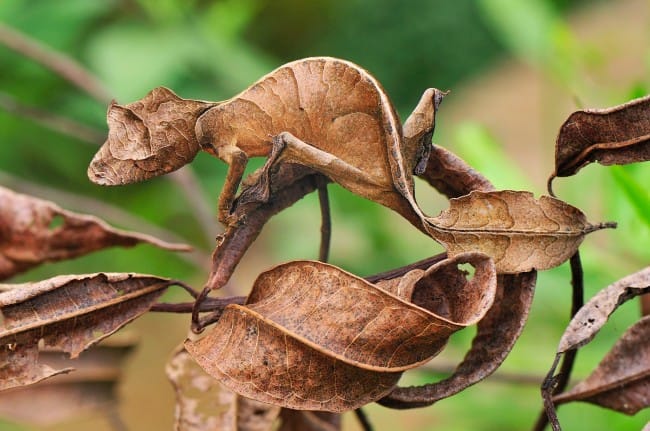
Satanic Leaf-tailed Gecko (Uroplatus phantasticus)
Satanic leaf-tailed gecko? Yes, it’s a harsh name for such a beautiful creature, but it owes the devilish label to its sinister red eyes, small pointed horns, and seemingly wry smile. Perhaps, though, the species is considered evil by the unsuspecting insects, flies, worms, and spiders, which it feeds on. Meanwhile, the other half of its name, “leaf-tailed”, is self-explanatory, as a protrusion on its behind looks like a dead leaf with two symmetrical areas rotted off.
In fact, even its body, with its veins showing through its skin to look like the veins of a leaf, allows the entire animal to blend into its habitat in the tropical Madagascar forests. There, it climbs on bushes and trees, and predators like large birds will have to strain their eyes if they hope to feast on this camouflage-protected creature.
9. Owl (Strigiformes)

Owl (Strigiformes)
Popular culture usually portrays the owl as a wise creature, perhaps owing to the bird’s quiet demeanor and large eyes. However, the owl is also a master of camouflage. In fact, all types of owls, except for the common barn owl, mimic the colorations and texture patterns of their habitat — a very important characteristic for the bird since it sleeps in the daytime.
Without the camouflage, the owl would be easy prey for predators, but its ability to blend into its environment allows it to sleep in daylight without much danger of being sighted. The snowy owl, for example, disappears into its snowy surroundings, while the motted wood-owl, looks like part of the patterns on a tree’s bark.
8. Stick Insect (Phasmatodea)

Stick Insect (Phasmatodea)
The name “stick insect” is self-explanatory, but how about the creature’s ordinal name, “Phasmatodea”? Well, that’s derived from an ancient Greek term meaning “apparition” or “phantom”, which is a clear reference to how the insect resembles sticks and leaves.
The camouflage is crucial to the animal because its large size makes it attractive to predators. In fact, the female of the genus Phobaeticus is the longest insect of all; including its outstretched legs, it measures up to 22.3 inches in length and weighs in excess of 65 grams. Further aiding the stick insect’s defense is some species’ ability to change color to match its surroundings.
Furthermore, the creature can also perform a rocking motion to mimic the movement of leaves or twigs swaying in the wind. Lastly, the stick insect has also been observed to feign death by remaining motionless for long periods of time when under threat of attack by predators.
7. Leaf Insect (Phylliidae)
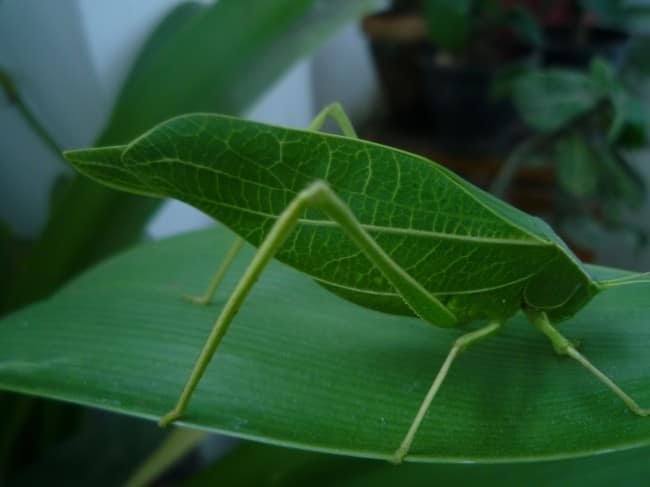
Leaf Insect (Phylliidae)
The leaf insect so closely resembles a leaf that scholar Antonio Pigafetta, who sailed with Ferdinand Magellan’s circumnavigational expedition, believed that the creatures were actually living leaves when he saw them on the island of Cimbonbon. The passage of his description reads as follows:
In this island are also found certain trees, the leaves of which, when they fall, are animated, and walk. They are like the leaves of the mulberry tree, but not so long; they have the leaf stalk short and pointed, and near the leaf stalk they have on each side two feet. If they are touched they escape, but if crushed they do not give out blood. I kept one for nine days in a box. When I opened it the leaf went round the box. I believe they live upon air.
While Pigafetta’s description is quite laughable by today’s standards, it’s certainly understandable why he thought what he did. After all, the creature’s camouflage has, for many centuries, fooled the leaf insect’s predators.
6. Chameleon (Chamaeleonidae)
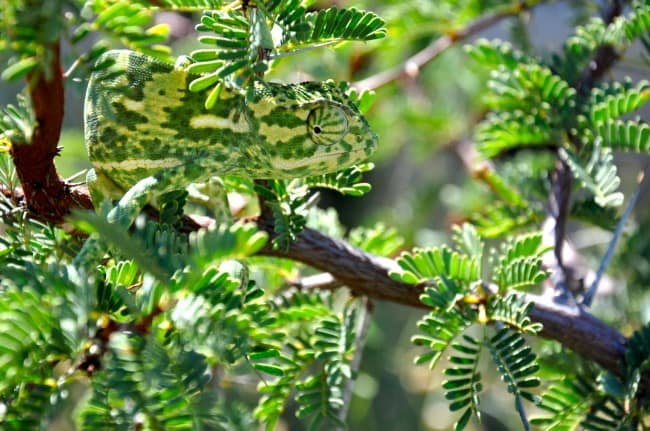
Chameleon (Chamaeleonidae)
Among all camouflage-equipped animals, the chameleon is the best known. However, there are a few common misconceptions about this animal. First, not all of the varieties of the chameleon actually have the ability to change colors.
Nevertheless, some varieties of the creature, which can be found in warm habitats all over the world, can actually change their skin coloration and pattern either to make themselves invisible to predators or to aid in thermoregulation — the ability to absorb or deflect heat more effectively. What enables the chameleon to do this is specialized cells on its skin that produces various colors whenever necessary.
5. Egyptian Nightjar (Caprimulgus aegyptius)

Egyptian Nightjar (Caprimulgus aegyptius)
If you find yourself in the south west Asia or Africa, and you hear a repetitive mechanical animal call that goes “kroo-kroo-kroo”, then there’s a chance you’re hearing the cooing of the Egyptian nightjar, a medium-small bird that also has distinctive camouflaging abilities. It uses this skill at night when it lies silent on the ground, the female sometimes warming its eggs directly on top of the sandy soil.
In this position, it will be almost impossible for predators to sight the Egyptian nightjar because the bird’s plumage is sand-colored and streaked with brown and buff, allowing the creature to blend seamlessly into its surroundings.
4. Toad (Anura)
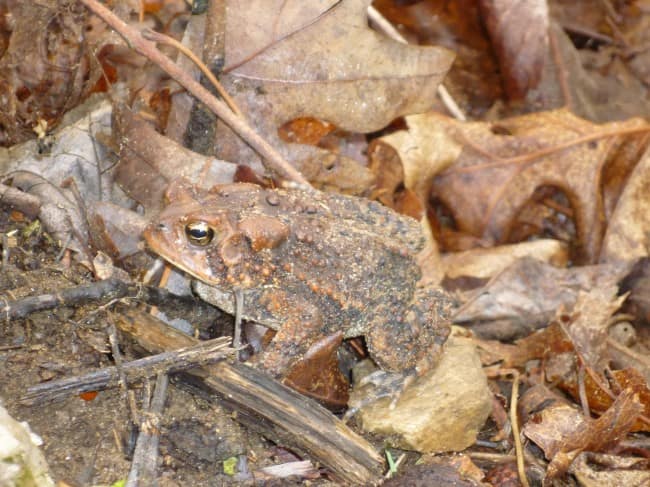
Toad (Anura)
Toads are mostly differentiated from frogs by their dry, leathery, wart-filled skin, making some people say that the toad is the “uglier” of the two. However, this “ugliness” serves an important function for toads as their rough covering allows them to blend into their surroundings for two purposes.
The first is to hide themselves from animals that prey on toads. The second is to camouflage themselves from their prey, making unsuspecting small insects unafraid to come close and easy for toads to snap up. Some species of toads with the most effective camouflages are the American toad, the European green toad, and the oriental fire-bellied toad.
3. Baron Caterpillar (Euthalia aconthea)
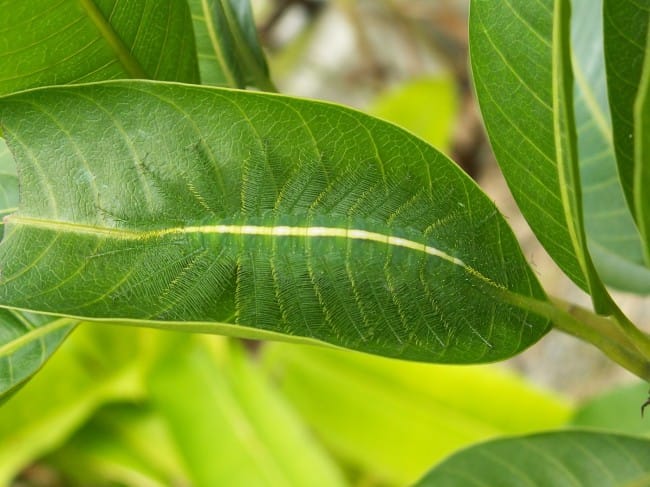
Baron Caterpillar (Euthalia aconthea)
The common Baron is actually a pretty ordinary-looking butterfly that is native to India and Southeast Asia. The male butterfly is brown and olive, while the female is of the same color but of a paler shade. It is the caterpillar of the species, however, that is truly an extraordinary creature in terms of its natural camouflage. More specifically, the Baron caterpillar’s green body and legs are often the exact color of the mango and cashew nut leaves that the caterpillar lives on.
Furthermore, the yellow and white stripe on the Baron caterpillar’s back appears to form part of a leaf’s center vein. Thus, the creature often appears invisible to birds that feed on caterpillars, giving the larval Baron a much better chance of reaching full maturity as a butterfly.
2. Dead Leaf Butterfly (Kallima inachus)
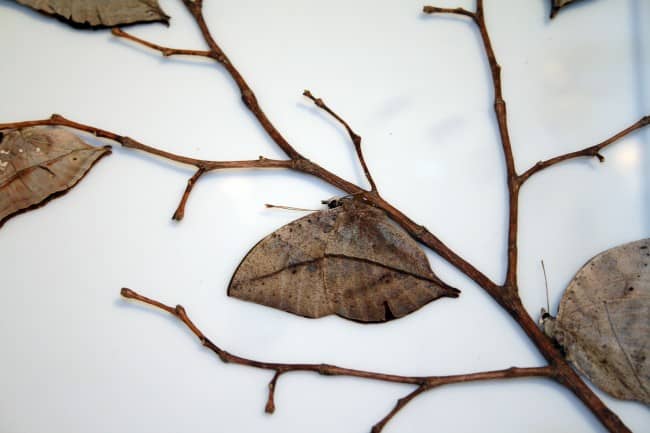
Dead Leaf Butterfly (Kallima inachus)
Also called the “orange oakleaf butterfly”, the dead leaf butterfly is similar to the Baron in that both of them camouflage themselves as leaves. However, there are two major differences between them.
First, the Baron possesses its camouflaging abilities in its larval stage. The dead leaf butterfly, on the other hand, acquires its camouflaging abilities when it’s already a mature butterfly. Secondly, the Baron disguises itself as a green leaf. The dead leaf butterfly, meanwhile, as its name suggests, disguises itself as a dried up leaf. Lastly, while the Baron has its camouflage on the upper side of its body, the dead leaf butterfly has its disguise on the underside of its wings.
Thus, when the wings of the dead leaf butterfly are closed, the leaf-like patterns on its underside make it almost impossible to pick out the animal from a bunch of dried leaves. It’s this feature that protects the dead leaf butterfly from its natural predators as it feeds on tree sap and over-ripe fruit.
1. Reef Stonefish (Synanceia verrucosa)
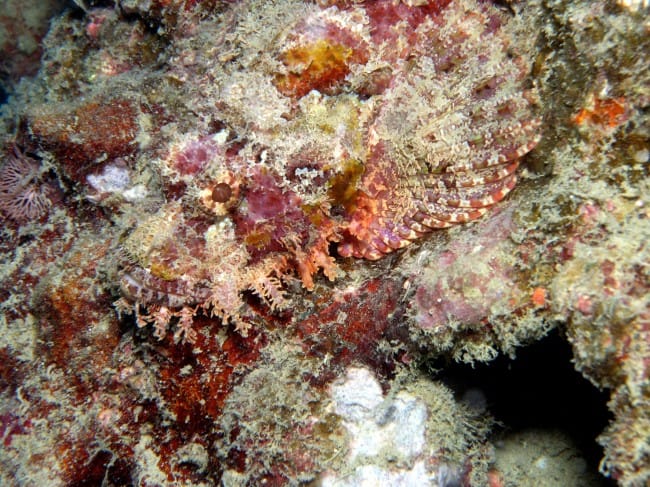
Reef Stonefish (Synanceia verrucosa)
If you’re diving near the reef bottom of the tropical marine waters in the Indian and Pacific Oceans between the Great Barrier Reef to the Red Sea, and you see a rock that seems to be breathing, DO NOT TOUCH IT. There’s a chance that it’s the reef stonefish, which is perfectly camouflaged as a rock and lives on reef bottoms.
Why shouldn’t you touch it? Well, while it won’t bite since it eats mostly shrimp, fish, and other crustaceans, it is protected by sharp spines that make the creature the most venomous fish in the world. In fact, the venom of the reef stonefish has been documented to cause death in some cases.
And worse, the fish’s spines are so sharp that they can penetrate even thick-soled boots — a pretty scary thought considering that it’s so difficult to spot the reef stonefish on the ocean floor. Despite its toxicity, however, the reef stonefish is eaten as a delicacy in some parts of Asia.
